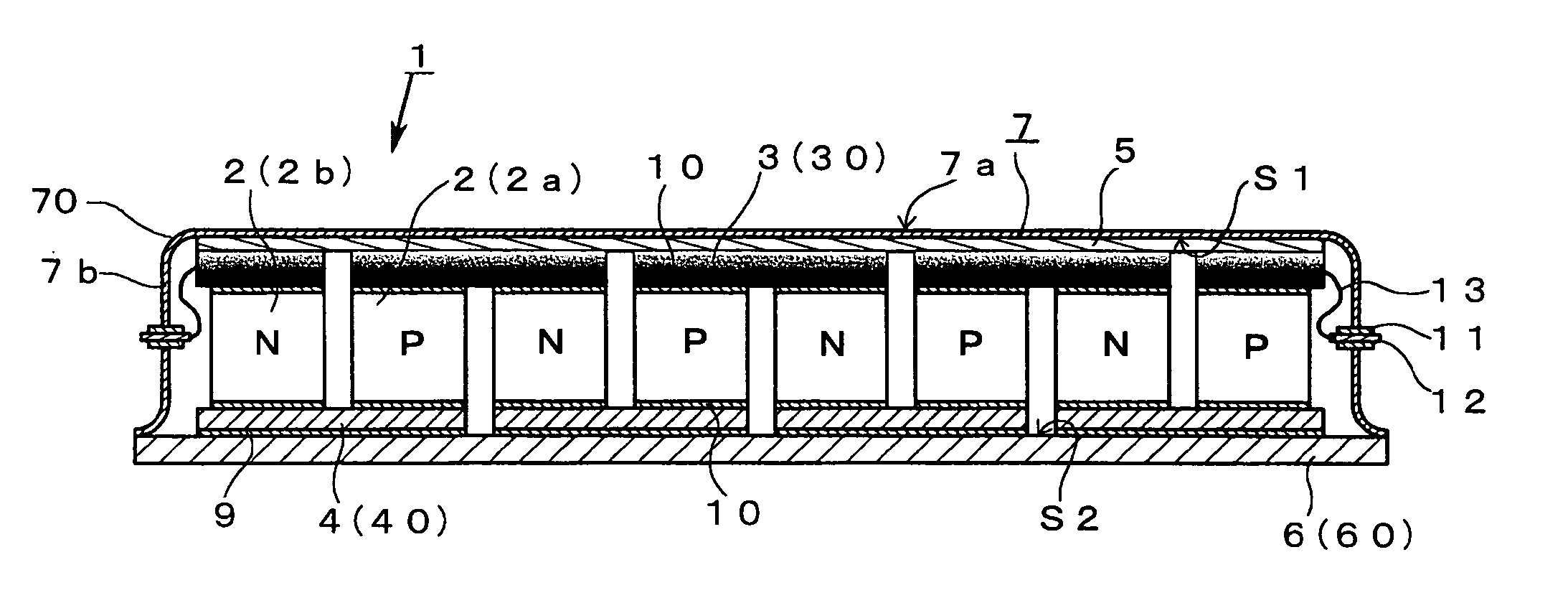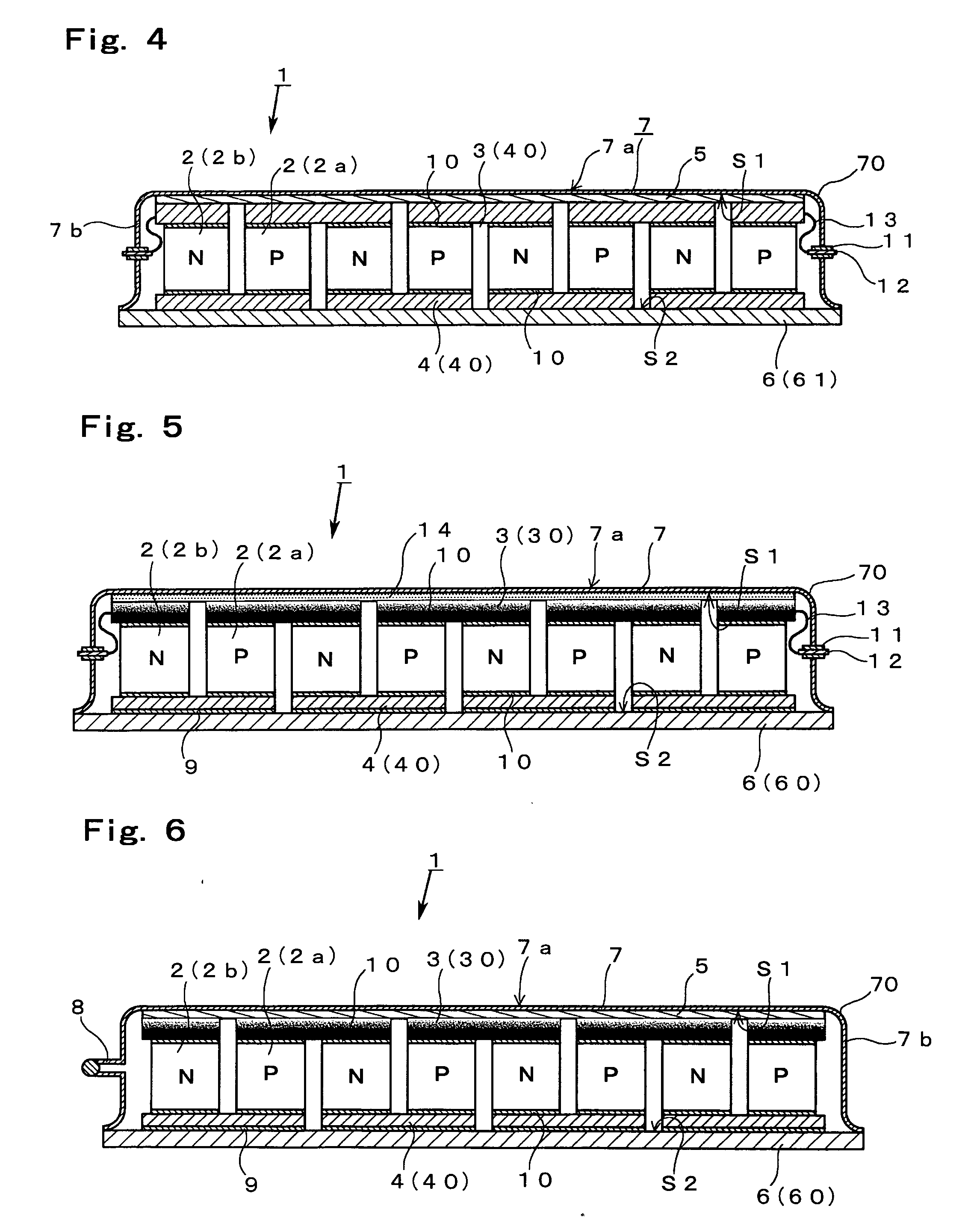Thermoelectric conversion module
a technology of conversion module and thermal insulation, which is applied in the direction of thermoelectric devices with peltier/seeback effect, basic electric elements, electric apparatus, etc., can solve the problems of weak strength and fragile, unsuitable industrial mass production, and inability to further upsize, so as to achieve less heat absorption and heat, and low emissivity. , the effect of less heat absorption
- Summary
- Abstract
- Description
- Claims
- Application Information
AI Technical Summary
Benefits of technology
Problems solved by technology
Method used
Image
Examples
Embodiment Construction
[0039] Hereunder, configurations of the present invention will be described in detail based on embodiments shown in the drawings.
[0040] FIGS. 1 to 9 show an embodiment of a thermoelectric conversion module according to the present invention. This thermoelectric conversion module 1 is a type for sealing thermoelectric semiconductors 2 in an airtight container 7, and includes at least a pair of thermoelectric semiconductors 2, a heat source side electrode portion 3 installed on a plane of a heat source side of the thermoelectric semiconductors 2 and electrically connected to the thermoelectric semiconductors 2, a radiation side electrode portion 4 installed on a plane of a low-temperature side of the thermoelectric semiconductors 2 on the opposite side to the heat source side electrode portion 3 and electrically connected to the thermoelectric semiconductors 2, a heating plate 7a and a cooling plate 6 for configuring a heat receiving portion by covering the electrode portions 3 and 4...
PUM
 Login to View More
Login to View More Abstract
Description
Claims
Application Information
 Login to View More
Login to View More - R&D
- Intellectual Property
- Life Sciences
- Materials
- Tech Scout
- Unparalleled Data Quality
- Higher Quality Content
- 60% Fewer Hallucinations
Browse by: Latest US Patents, China's latest patents, Technical Efficacy Thesaurus, Application Domain, Technology Topic, Popular Technical Reports.
© 2025 PatSnap. All rights reserved.Legal|Privacy policy|Modern Slavery Act Transparency Statement|Sitemap|About US| Contact US: help@patsnap.com



